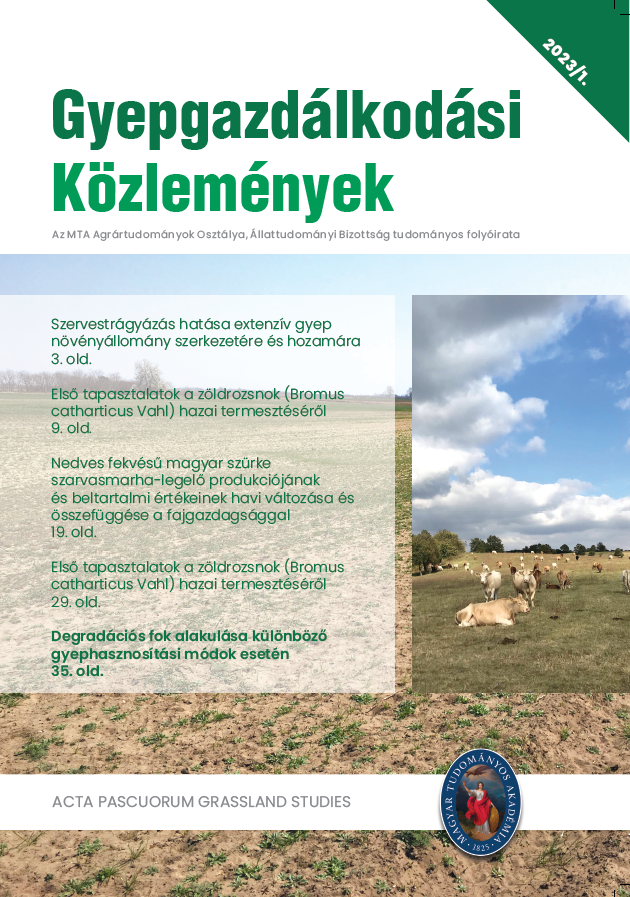Comparison of vegetation of Hungarian Grey Cattle and Hungarian water buffalo pastures in a sample area of the Danube-Tisza Interfluve
Szerzők
Megtekintés
Kulcsszavak
Licenc
Copyright (c) 2023 Gyepgazdálkodási Közlemények

This work is licensed under a Creative Commons Attribution-NonCommercial-NoDerivatives 4.0 International License.
Hogyan hivatkozzuk
Absztrakt
In the present study, we aimed to investigate the coenology of the Kelemen-szék in the Kiskunság National Park. The coenological studies were carried out twice. We compared areas with different vegetation types. During these two surveys, we examined in total 90 quadrats of mixed grazed and fenced control areas. Ones were grazed by Hungarian domestic buffalo and Hungarian grey cattle and others were no grazed. Based on these surveys, it is possible to conclude about spatial and temporal changes in vegetation as a result of livestock husbandry in the area. Due to the size and heterogeneity of the studied area, we intended to investigate small homogeneous areas and respective control areas. Coenological surveys were done on lower and higher lying pastures, saline soil areas and loess areas.
In the study plots, grazing led to stability in the species composition of loess grassland and saline grassland, so that they also satisfy the requirements moof nature conservation. The dominant and character species of the associations, and the typical species of the genus Festuca have a significant cover value. The dense and tall Puccinellia swards require more attention, because they are more vulnerable against grazing. Grazing and extensive livestock husbandry, which can be applied in the future, is a suitable method for the management of lowland areas. In order to conserve the associations, preservation of grazing is necessary. To provide amount of biomass of areas, the grazing has a significant role. The conservation of native loess grasslands, even in the form of fragments, plays an outstanding function. Hence, based on the initial surveys, the combination of Hungarian grey cattle and water buffalo is beneficial in terms of nature conservation.

 https://doi.org/10.55725/gygk/2023/21/1/12786
https://doi.org/10.55725/gygk/2023/21/1/12786